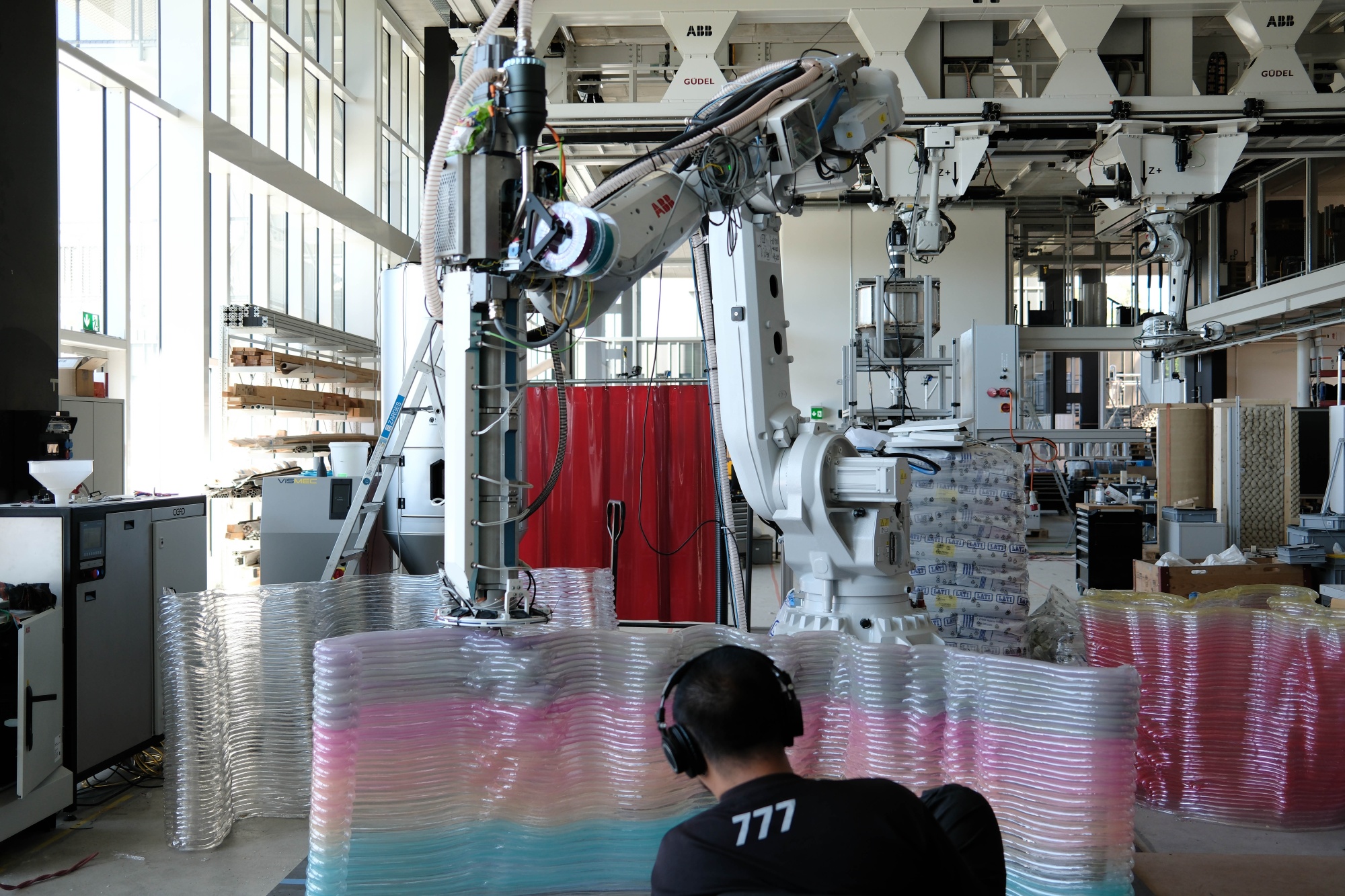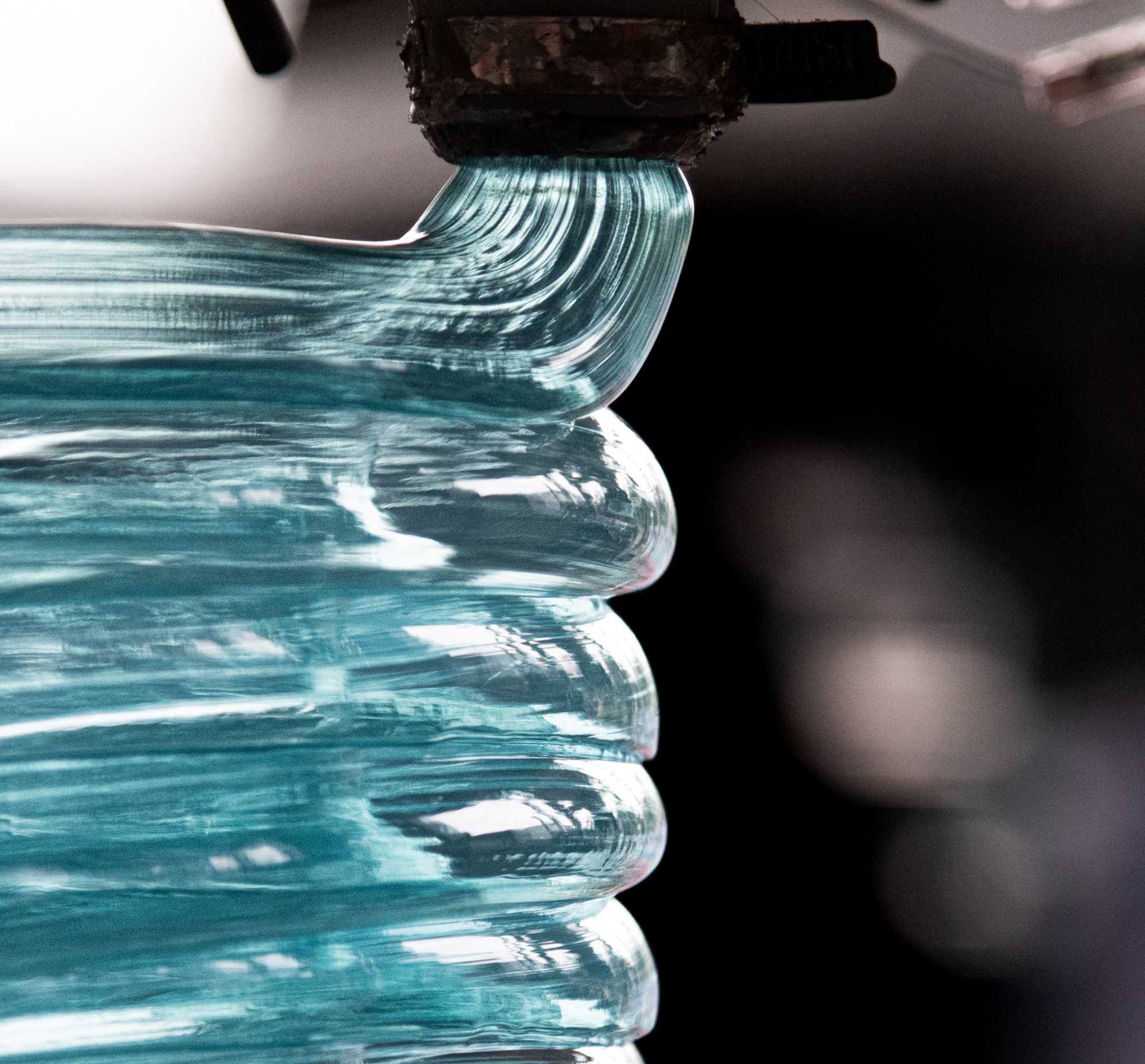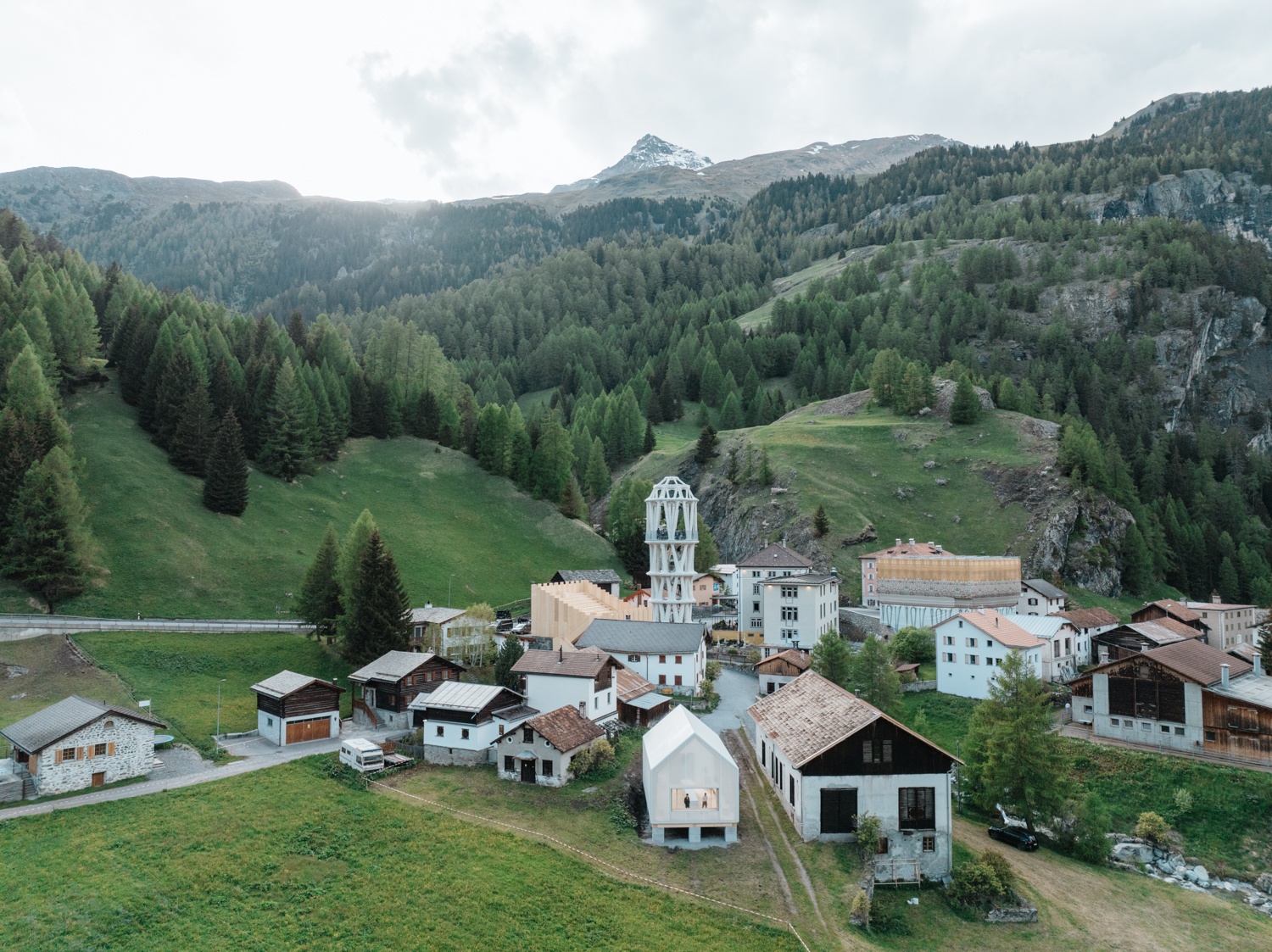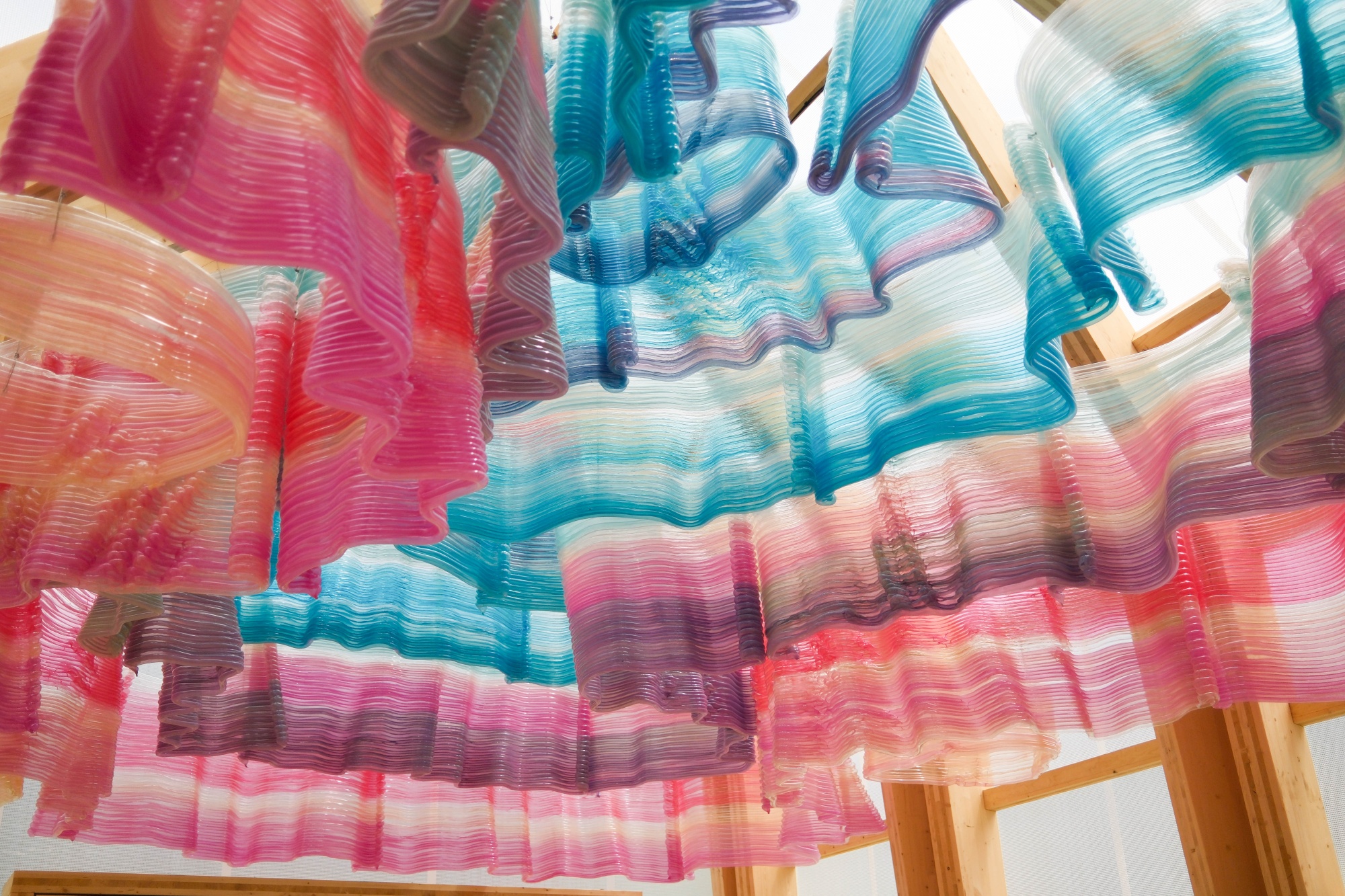In the Alpine village of Mulegns, Switzerland, a new experimental ice cream shop looks like something out of a dream. From the outside, it resembles a classic wooden barn. But step inside, and you’ll find a colorful, curving interior made entirely from 3D printed recycled plastic. This is Gelateria Mulegns, a bold blend of tradition and technology.
This project is part of an experiment in sustainable architecture and digital design. The building is part of a larger effort by the group Nova Fundaziun Origen to bring cultural energy and new ideas into this quiet Alpine region.
Barn on the Outside, Baroque on the Inside
The outside of the Gelateria was built from reclaimed mass timber: locally sourced wood that had been used before. The angular design is described as an origami structure, wrapped in a translucent fabric skin that lets light filter through. It’s a nod to classic Alpine barns, but with a futuristic twist.
But the real surprise is inside, thanks to a swirling, colorful dome (called a cupola) made from over 250 square meters of 3D printed recycled plastic. Even though it’s big, the entire plastic interior weighs under one ton.

ETH Zurich students 3D printing the interior of Gelataria Mulegns.
This wavy interior was created by students from ETH Zurich’s Master of Advanced Studies (MAS) in Architecture and Digital Fabrication program using a technique called Hollow-Core 3D Printing (HC3DP). Developed at ETH’s Robotic Fabrication Lab, HC3DP is a large‑scale, robotic pellet extruder that prints recycled PETG plastic in long, hollow tubes instead of solid lines. This makes the structure lighter, faster to print, and more material-efficient.
The team also lowered the print resolution on purpose, allowing the robots to work faster while giving the surface a bold, textured look. Although the technique was originally developed for making façade panels, here it was adapted to build an entire interior space.
As a fully recyclable structure, the whole building is designed to be taken apart. Every timber piece can be reused or reassembled, and the 3D printed interior can eventually be shredded and reprinted into new forms. It’s a great example of the potential of reusability in architecture.

ETH Zurich students 3D printing the interior of Gelataria Mulegns.
The project was commissioned by Nova Fundaziun Origen, a cultural foundation based in the region. Origen has been working to revitalize Mulegns through art, architecture, and performance. Instead of building large museums or permanent attractions, the foundation focuses on small, striking structures that blend storytelling, design, and local identity.

Printing the Gelateria Mulegns with recycled PETG plastic.
Gelateria is part of that vision. Along with other projects like the nearby White Tower (Tor Alva), a striking, 30-meter-tall structure and the world’s tallest 3D printed building, Gelateria is part of Origen’s effort to draw visitors to Mulegns and support the area’s cultural life.

Gelataria Mulegns next to the Tor Alva in Switzerland. Image courtesy of ETH Zurich.
Images courtesy of ETH Zurich



